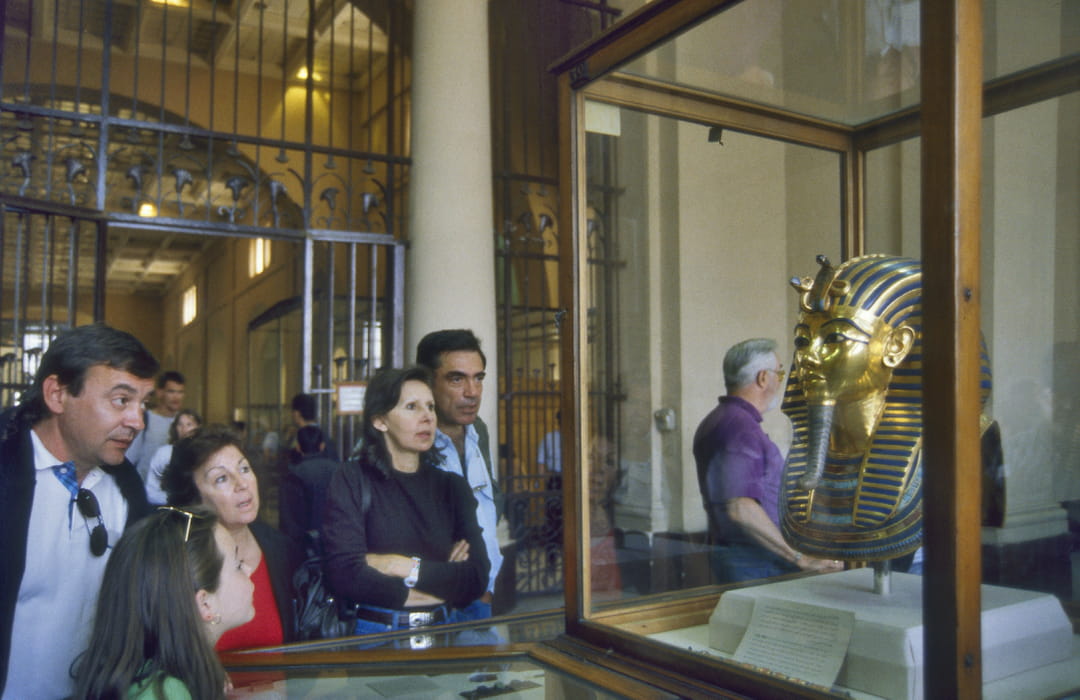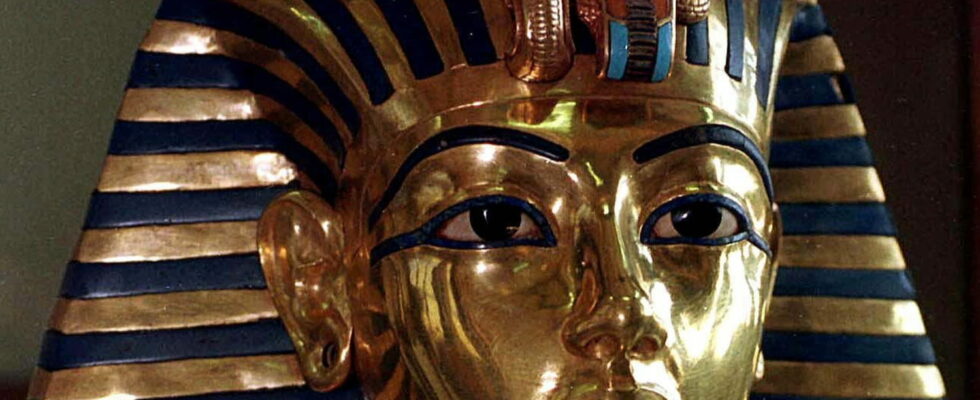The mask of Tutankhamun, a flagship piece of ancient Egypt, would not have been designed for the famous pharaoh.
He is one of the great faces of the Egyptian pharaohs. Tutankhamun came to the throne in 1332 BC when he was just a child. He reigned until 1323 BCE, having lost his life suddenly. He would have suffered from different illnesses, some of which were probably due to the consanguinity of his parents.
His mask is part of one of the most recognizable elements of the pharaoh, it is kept in the great museum of Cairo. It measures 53cm high, is encrusted with precious stones and features an imposing golden beard. It was discovered in 1922 by Howard Carter.
However, a recent re-examination of the historical documents of the discovery of Tutankhamun’s tomb, and therefore of his mask, by researchers at the University of York calls into question its belonging to the pharaoh, at least the fact that it was originally him destined. Joann Fletcher, Egyptologist leading this team, noticed a disturbing detail: “the face was made of a completely different gold from the rest”, she revealed in a documentary History Hit. Traces of welding were also visible. This could show that Tutankhamun’s face was added to the initial mask. Modifications that would not agree with ancient Egyptian tradition.

It also has holes at the ears to accommodate earrings. However, in ancient Egypt, it was high-ranking women and children who wore such jewelry and not the pharaohs. “This mask was not made for an adult male pharaoh,” assured Joann Fletcher. Even if Tutankhamun was a young pharaoh, he would have ended up no longer wearing earrings. At his death, he would therefore not have been represented with pierced ears.
This then raised the question of who was the real recipient of this golden mask: it would be the pharaoh’s mother-in-law, Nefertiti, married to the pharaoh Akhenaten, and died before Tutankhamun. His burial site has never been found.
The sudden death of the pharaoh at the age of 19 could then have forced the authorities to scramble to provide him with a proper burial chamber in a short time. It is therefore possible that they needed a mask urgently and would have stolen it from one of Egypt’s most famous queens rather than having a new one made from scratch. This haste is reflected in the size of his resting place in the Valley of the Kings, very small for a person of such rank.
